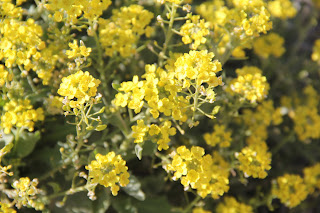Mt. Chortiatis, Macedonia, February 25, 2012
This is the only species of the genus Helleborus, which extends today to the Central Greece. The ancient sources, however, refer to Helleborus niger (ελλέβορος μέλας) as growing on Oeta, Parnassus and Helicon mountains, and been used by the ancient Greeks as a cure for epilepsy, melancholy and madness (Theophrastus, HP ΙΧ 2, 8.8, 10.2-4. Dioscorides, De materia medica IV 148-152, 162. Strabo ΙΧ 418. Pausanias Χ 37, 7-8. Horace, Sermones II 1. 83, 166; Ars Poetica 300. Pliny, HN XXV 47-52. Suetonius, De Vita Caesarum: Caius Caligula XXIX. Petronius, Satiricon 88, 4. Aulus Gellius, Noctes Atticae XVII 15. 1, 6. Valerius Maximus, VIII 7 fragm. 5. Frontinus, Strategemata III 7,6. Polyaenus, VI 13). Since Helleborus niger has never been reported in modern time Greece, it is quite possible that the species called today by this name is not identical with the "Helleborus niger" of the ancients. In this case Helleborus cyclophyllus (modern Greek name: σκάρφη) would be the most probable candidate to identify with the ελλέβορος μέλας of the ancient sources.





